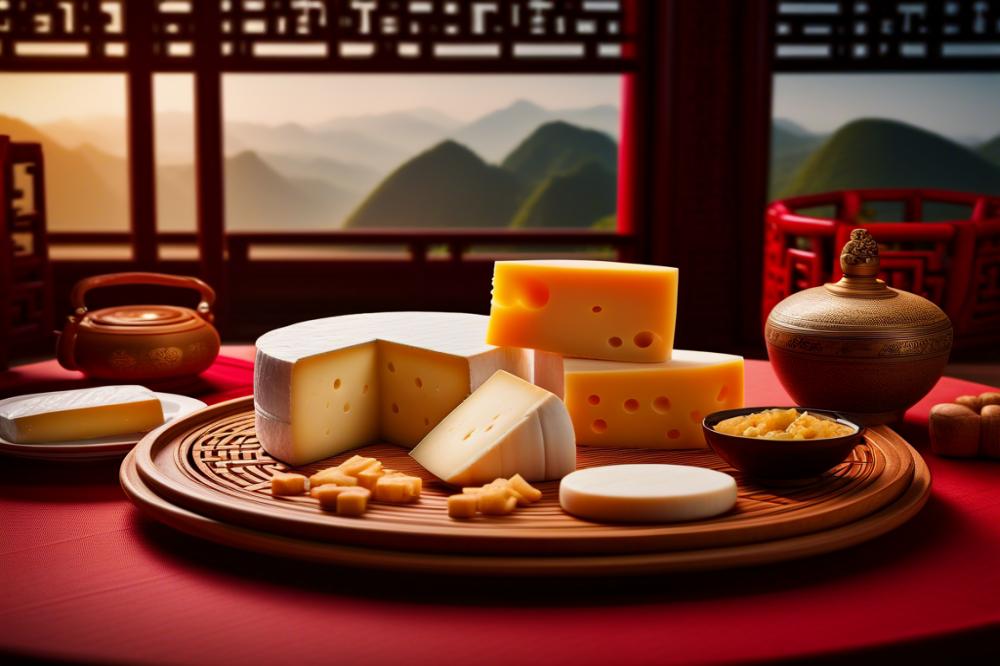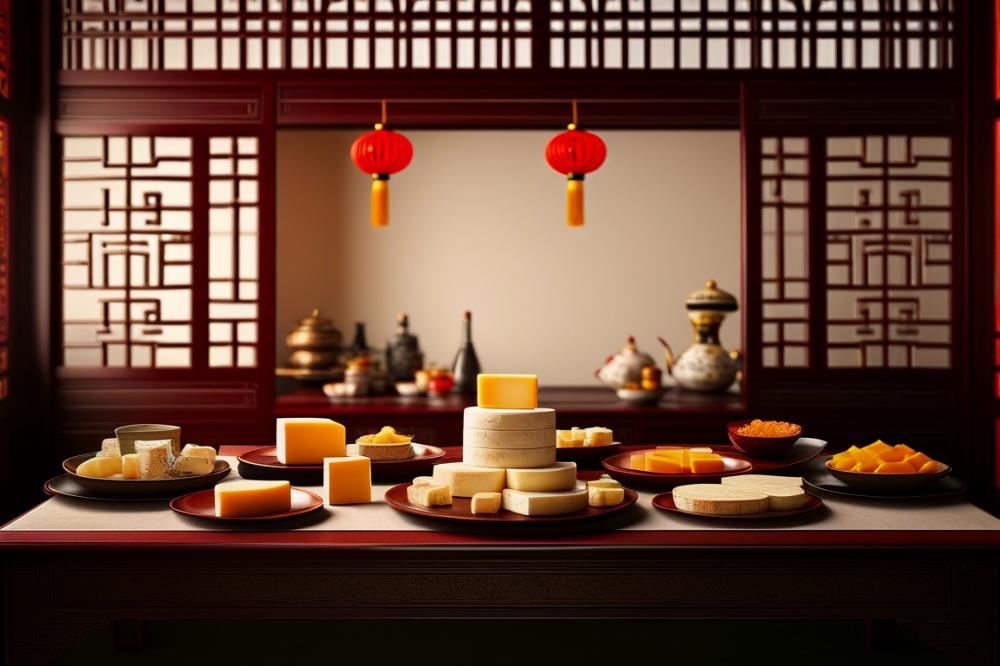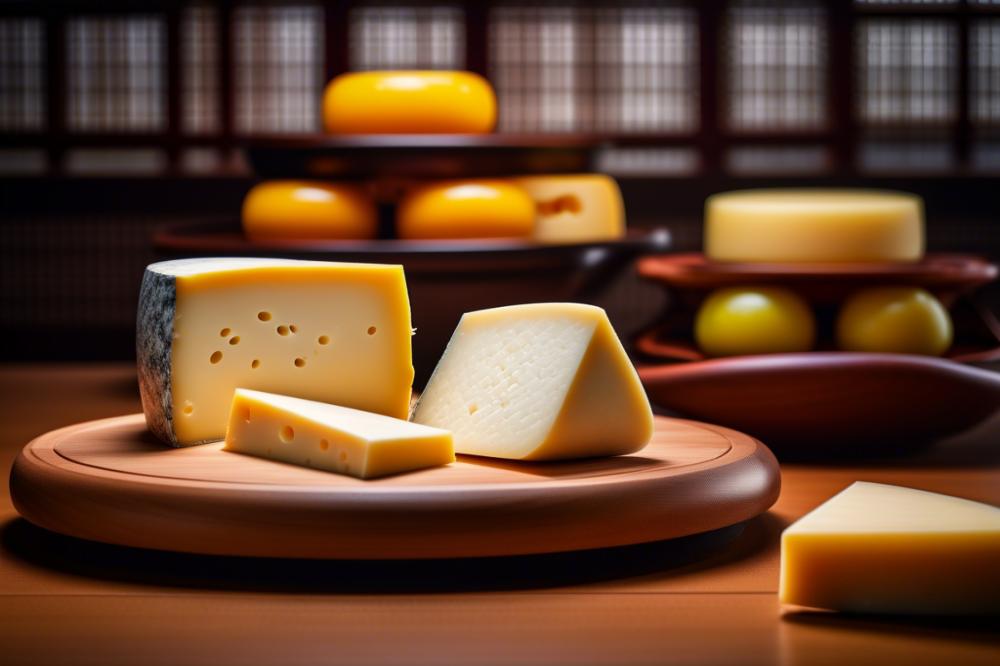Overview of Cheese in China and Its Historical Context
Cheese in China has a fascinating journey that spans centuries. While cheese is often thought of as a staple in Western cuisines, its presence in China has been less prominent. The country’s rich history of dairy consumption can be traced back to ancient times, but cheese wasn’t commonly produced or eaten until recently.
Traditionally, dairy products in China were primarily limited to milk and yogurt made from cow or goat’s milk. These products were used for their nutritional value and health benefits. Fresh milk, consumed by some nomadic tribes, and fermented dairy products played a role in some regions. However, the idea of cheese as a food choice didn’t take root in the mainstream diet.
Culinary practices in China tend to value the balance of flavors and textures. Dairy has not always fit into these practices. Yet, as globalization has spread, so has interest in diverse foods. This shift has led to a growing acceptance of cheese. Today, people are more curious about trying different types of dairy, which opens up opportunities for new dishes and recipes.
Importance of Dairy in Chinese Cuisine

In Chinese cuisine, dairy products, especially milk, have grown more popular. They provide a rich source of protein and fat that enhance daily meals. Although milk has only recently gained traction, people are beginning to appreciate its possibilities. Recipes incorporating milk are becoming more common, even in traditional dishes.
For many years, cheese remained on the sidelines. Often, it was seen as an exotic ingredient. Now, kitchen experimentation is leading to fresh combinations of flavors. Chefs and home cooks alike are eager to blend cheese with local ingredients. This blending reflects how food cultures can evolve and embrace new ideas.
With the rise of health consciousness, dairy also plays a notable role. Many people are seeking out nutritious options, and cheese can fulfill that need. It offers Calcium and other vital nutrients. As more varieties emerge, curiosity around cheese only continues to grow.
Evolution from Traditional Practices to Modern Applications

In recent decades, the evolution of Dairy Innovations has been apparent. Local dairy industries are expanding, with more farms producing different cheese types. Artisan cheese makers have started experimenting with traditional methods, introducing flavors that appeal to modern palates. Innovative techniques and flavors are bringing cheese into the spotlight.
Markets across China now showcase an impressive array of cheese. Specialty stores and online retailers offer products ranging from soft, creamy cheese to aged varieties. Many are inspired by Western cheeses but infused with local flavors. The adaptation of cheese into regional cuisines has begun to create exciting culinary trends.
This development also points to a more profound cultural shift. As cities become more cosmopolitan, people are increasingly open to trying new foods. Cheese has moved beyond the realm of novelty. It is finding its place on tables across the nation, influencing meal choices and gatherings. As this trend continues, one can only wonder about the future role of cheese in Chinese dining.
Cheese in China
Traditional methods of cheese production in China
In China, cheese production has deep historical roots. Ancient methods used animal milk to create soft and fermented dairy products. Varied techniques have developed over centuries, often influenced by local climates and available resources. For instance, some regions utilize specific bacterial cultures that yield distinct flavors and textures. The traditional process usually includes curdling milk and separating the whey. Afterward, the curds are pressed to form cheese. Technologies from various provinces have contributed to this craft, leading to diverse results.
Regional varieties and their unique characteristics
Different areas of China showcase their own cheese varieties. In Tibet, a product known as chura is common. It takes on a crumbly texture and often accompanies traditional dishes. Northeastern provinces produce a type called susu, which is often stringy and slightly tangy. Many local farmers create small-batch cheeses, focusing on freshness and regional tastes. The flavors range widely, from mild and creamy to robust and sharp, depending on the milk source and production methods. Certain communities still rely on age-old practices despite the modern innovations surrounding them.
Cultural significance and traditional dishes featuring cheese
Cheese plays a prominent role in specific cultural traditions within China. In Tibetan celebrations, chura often appears as part of offerings. Its inclusion in meals signifies warmth and hospitality. Additionally, some regions incorporate cheese into various dumplings. This practice enriches their taste and provides texture. In contrast, urban centers increasingly experiment with Western-style cheeses in fusion cuisine. This blending reflects the changing preferences of consumers. Cheese, whether traditional or modern, symbolizes a mix of heritage and innovation in the culinary landscape.
Dairy Innovations
New trends in cheese production are emerging across China. These developments are changing how people view cheese. Traditionally, cheese was not a staple in Chinese cuisine. However, the landscape is shifting dramatically. Many consumers now seek out dairy products that were once considered foreign.
Artisan cheese makers are popping up in various regions. These small producers are focusing on quality and traditional methods. They create specialty cheeses that reflect local flavors and ingredients. This allows them to stand out in a crowded market. Some makers are experimenting with Western techniques while also embracing Chinese tastes.
Globalization has played a significant role in this transformation. Exposure to international cuisines has changed Chinese preferences. Countries like France and Italy influence what people expect from cheese. Supermarkets now stock a broader range of options than ever before. Imported cheeses are increasingly available, making them easier to find.
Emerging brands are also making waves in this sector. They often combine traditional practices with modern aesthetics. This blend attracts younger consumers looking for new experiences. Online platforms provide a space for these brands to reach their audiences quickly. Social media showcases beautiful cheese platters and unique recipes, further driving interest.
As new varieties hit the shelves, taste buds are evolving. Local palates are adapting to bold flavors and diverse textures. People are now experimenting with cheese in ways that were once rare. Dishes incorporating cheese are becoming commonplace in many homes. This trend signals a significant shift in food culture.
Networking among cheese producers is growing. Collaborative events allow them to share knowledge and techniques. Workshops teach both professionals and enthusiasts about cheese-making. This interaction cultivates a community that thrives on innovation. The excitement is palpable as more people discover the joys of cheese.
Recipe: Chinese-style Cheese-Stuffed Buns
Cheese-stuffed buns offer a delightful twist on traditional Chinese dough. They combine familiar flavors while introducing cheese into the mix. This recipe is straightforward and fun. You can easily create a batch to share with family or friends.
Ingredients:
- 2 cups all-purpose flour
- 1 cup warm water
- 1 teaspoon sugar
- 1 teaspoon salt
- 1 teaspoon yeast
- 1 cup grated cheese (mozzarella or local cheese)
- Optional: scallions or spicy peppers for flavor
Instructions:
- First, in a bowl, mix warm water, sugar, and yeast. Let this sit for about 10 minutes. It’s important to develop the yeast properly.
- Next, take another bowl and combine flour with salt. Mix this in with the yeast mixture until blended.
- Knead the dough on a floured surface for approximately 10 minutes. You want it to become smooth.
- After kneading, allow the dough to rise in a warm spot until it doubles in size, which should take around 1 hour.
- Once risen, punch down the dough gently. Divide it into small balls. Each ball should be about the size of a golf ball.
- Flatten every ball and place about a tablespoon of grated cheese in the center. This is where the magic happens.
- Wrap the dough around the cheese, sealing it tightly to avoid any leakage.
- Steam the filled buns for 15 to 20 minutes. They are done when they are cooked through and fluffy.
- Serve these hot, perhaps with a flavorful dipping sauce to enhance the experience.
Nutritional Information (per bun, approx.):
- Calories: 150
- Protein: 7g
- Fat: 6g
- Carbohydrates: 19g
Health Benefits
These buns provide a solid source of protein and calcium, both essential for a balanced diet. Incorporating cheese can enrich meals while remaining versatile in various recipes. Different variations can include herbs or spices. Feel free to adjust based on your taste preferences.
Final Thoughts on Cheese in China
Summary of the evolution
Cheese has transformed remarkably in China. Initially, it was mainly a traditional cheese, enjoyed in specific regions. Over time, the taste for cheese expanded, especially in urban areas. New tastes and ideas about dairy products began to take root. The introduction of Western styles opened doors to a variety of cheeses, from creamy mascarpone to pungent blue cheese. This change has encouraged local production, resulting in a blend of Western techniques with traditional practices.
Future prospects
Looking forward, cheese consumption is expected to rise further. Young people in cities are curious about global foods, and many are eager to try different types of cheese. This growing interest could lead to the establishment of more cheese farms and factories across the country. modern cheese production methods will likely enhance quality and variety. As more cheese options become available, consumers will have even more ways to enjoy this flavorful food.
Explore and Enjoy
Trying cheese can be a delightful experience. Many varieties lend themselves to different dishes and cultural practices. Whether it’s a soft cheese on a baguette or a sharp cheese with fruit, there is something for everyone. People should feel encouraged to explore the many forms of cheese. Taste tests, cooking classes, or simply enjoying a cheese platter can enhance appreciation. Cheese is a diverse food, bringing people together through its flavor and cultural significance.



